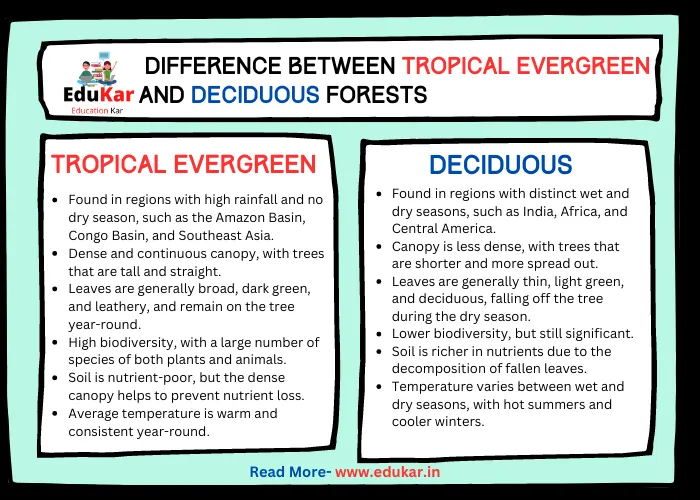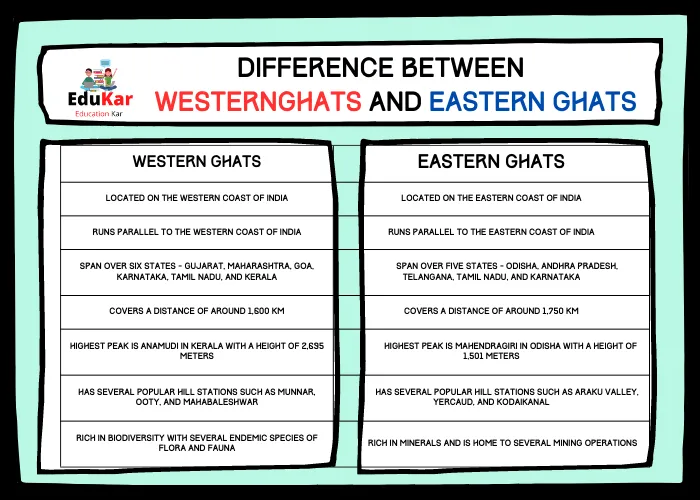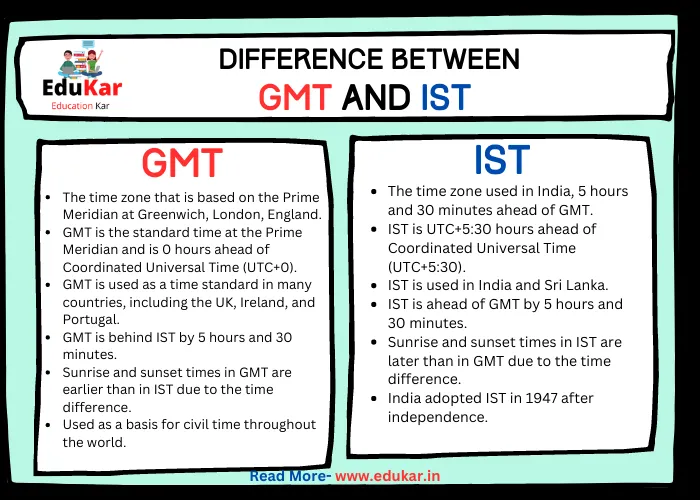Contents
- 1 Introduction
- 2 Tropical Evergreen Forests
- 3 Deciduous Forests
- 4 Differences Between Tropical Evergreen and Deciduous Forests
- 5 Human Impacts on Tropical Evergreen and Deciduous Forests in India
- 6 Importance of Conservation and Restoration Efforts
- 7 Conclusion
- 8 FAQs
- 8.1 What is the main difference between tropical evergreen and deciduous forests?
- 8.2 Where are tropical evergreen forests found in India?
- 8.3 Where are deciduous forests found in India?
- 8.4 What are some tree species found in tropical evergreen forests in India?
- 8.5 What are some tree species found in deciduous forests in India?
- 8.6 Which forest type has more diverse flora and fauna?
- 8.7 Why are both tropical evergreen and deciduous forests important?
- 8.8 What are some human impacts on tropical evergreen and deciduous forests in India?
- 8.9 What can be done to protect and restore tropical evergreen and deciduous forests in India?
Learn about the key differences between tropical evergreen and deciduous forests, their characteristics, distribution in India, and the human impacts on these ecosystems. Discover the importance of conservation and restoration efforts to protect these valuable forest ecosystems.

Introduction
Forests are an integral part of India’s natural landscape and provide a variety of ecological, economic, and cultural benefits. India is home to a diverse range of forest types, including tropical evergreen and deciduous forests. While both these forest types are important, they differ in terms of their climate, flora and fauna, and other characteristics.
Tropical Evergreen Forests
Tropical evergreen forests are typically found in areas with high rainfall and humidity. These forests are characterized by tall trees that remain green throughout the year. In India, tropical evergreen forests are found in the Western Ghats, the Eastern Himalayas, and the Andaman and Nicobar Islands. The soil in these forests is generally rich in nutrients and organic matter, and the climate is warm and humid.
The flora and fauna in tropical evergreen forests are highly diverse, with a large number of endemic species. Some of the trees found in these forests include teak, rosewood, ebony, and mahogany. The forests are also home to a variety of animal species, including elephants, tigers, leopards, and a wide range of bird species. The importance of tropical evergreen forests lies in their ability to provide habitat for a large number of species, maintain soil fertility, and regulate local and regional climate.
Deciduous Forests
Deciduous forests are typically found in areas with distinct wet and dry seasons. These forests are characterized by trees that shed their leaves during the dry season to conserve water. In India, deciduous forests are found in central India, the Himalayan foothills, and parts of the Deccan plateau. The soil in these forests is generally less fertile than that of tropical evergreen forests, and the climate is more seasonal, with hot summers and cold winters.
The flora and fauna in deciduous forests are also diverse, but less so than in tropical evergreen forests. Some of the tree species found in these forests include sal, teak, and bamboo. The forests are home to a variety of animal species, including deer, monkeys, and wild boars. The importance of deciduous forests lies in their ability to provide timber and non-timber forest products, maintain soil fertility, and regulate local and regional climate.
Differences Between Tropical Evergreen and Deciduous Forests
| Feature | Tropical Evergreen Forest | Deciduous Forest |
|---|---|---|
| Location | Found in regions with high rainfall and no dry season, such as the Amazon Basin, Congo Basin, and Southeast Asia | Found in regions with distinct wet and dry seasons, such as India, Africa, and Central America |
| Canopy | Dense and continuous canopy, with trees that are tall and straight | Canopy is less dense, with trees that are shorter and more spread out |
| Leaves | Leaves are generally broad, dark green, and leathery, and remain on the tree year-round | Leaves are generally thin, light green, and deciduous, falling off the tree during the dry season |
| Biodiversity | High biodiversity, with a large number of species of both plants and animals | Lower biodiversity, but still significant |
| Soil | Soil is nutrient-poor, but the dense canopy helps to prevent nutrient loss | Soil is richer in nutrients due to the decomposition of fallen leaves |
| Temperature | Average temperature is warm and consistent year-round | Temperature varies between wet and dry seasons, with hot summers and cooler winters |
| Rainfall | High rainfall, with no distinct dry season | Rainfall is seasonal, with a distinct wet and dry season |
| Water availability | Water is plentiful year-round | Water availability varies between wet and dry seasons |
| Human impact | High levels of deforestation and habitat loss due to agriculture, logging, and urbanization | High levels of deforestation and habitat loss due to agriculture, logging, and urbanization |
| Fire risk | Low risk of wildfires due to high humidity and moisture content | High risk of wildfires during the dry season |
| Adaptations | Plants have adapted to low light levels, high humidity, and poor soil conditions | Plants have adapted to seasonal changes in rainfall and temperature |
| Examples | Amazon rainforest, Congo rainforest, Southeast Asian rainforest | Indian monsoon forest, African savanna, Central American dry forest |
| Carbon storage | High carbon storage due to the large number of trees and high levels of rainfall | Lower carbon storage due to fewer trees and more seasonal rainfall |
| Economic value | Valuable timber and non-timber forest products such as rubber, fruits, and medicinal plants | Valuable timber and non-timber forest products such as teak, mahogany, and shea butter |
Human Impacts on Tropical Evergreen and Deciduous Forests in India
Both tropical evergreen and deciduous forests in India are under threat from human activities such as deforestation, forest fragmentation, and climate change. Deforestation is a significant problem in India, with large areas of forest being cleared for agriculture, timber, and other uses. Forest fragmentation, where forests are broken up into smaller and more isolated patches, also has a negative impact on forest ecosystems.
Climate change is also affecting forest ecosystems in India, with rising temperatures and changes in rainfall patterns affecting the distribution and composition of forest types. This can lead to changes in the composition of species and affect the ability of forests to provide ecosystem services such as carbon sequestration, soil fertility, and water regulation.
Importance of Conservation and Restoration Efforts
Given the importance of forests in India for ecological, economic, and cultural reasons, there is a need for conservation and restoration efforts to protect and restore forest ecosystems. Efforts such as protected areas, reforestation, and sustainable forest management can help to conserve and restore forest ecosystems in India. These efforts can help to protect biodiversity, provide ecosystem services, and promote sustainable development.
Conclusion
Tropical evergreen and deciduous forests are two important forest types in India that differ in their climate, flora and fauna, and other characteristics. While both these forest types are important, they are under threat from human activities such as deforestation, forest fragmentation, and climate change. Conservation and restoration efforts can help to protect and restore forest ecosystems in India, providing important ecological, economic, and cultural benefits for the country.
FAQs
What is the main difference between tropical evergreen and deciduous forests?
The main difference between tropical evergreen and deciduous forests is the shedding of leaves. Deciduous forests shed their leaves during the dry season to conserve water, while tropical evergreen forests remain green throughout the year.
Where are tropical evergreen forests found in India?
Tropical evergreen forests are found in the Western Ghats, the Eastern Himalayas, and the Andaman and Nicobar Islands.
Where are deciduous forests found in India?
Deciduous forests are found in central India, the Himalayan foothills, and parts of the Deccan plateau.
What are some tree species found in tropical evergreen forests in India?
Some of the tree species found in tropical evergreen forests in India include teak, rosewood, ebony, and mahogany.
What are some tree species found in deciduous forests in India?
Some of the tree species found in deciduous forests in India include sal, teak, and bamboo.
Which forest type has more diverse flora and fauna?
Tropical evergreen forests have a more diverse flora and fauna than deciduous forests, with many endemic species.
Why are both tropical evergreen and deciduous forests important?
Both forest types are important for their role in providing habitat for a range of plant and animal species, maintaining soil fertility, and regulating local and regional climate.
What are some human impacts on tropical evergreen and deciduous forests in India?
Human impacts on these forest types include deforestation, forest fragmentation, and climate change.
What can be done to protect and restore tropical evergreen and deciduous forests in India?
Efforts such as protected areas, reforestation, and sustainable forest management can help to conserve and restore forest ecosystems in India.








